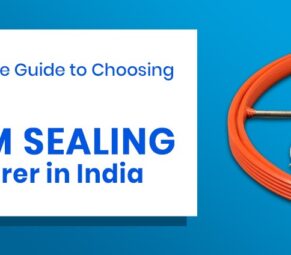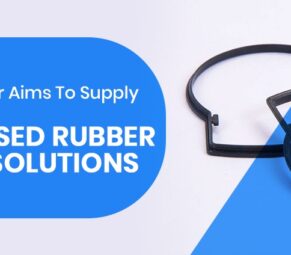
Lorem ipsum dolor sit amet consectetur adip elit sed done eiusmod ut laboret dolore mag oris nisi ut aliquip ex ea consequat dolor rep cillum dolore fugiat nula pariat.
Lastest Posts
CONTACT US
NEED HELP?
Speak with a human to filling out a form? call corporate office and we will connect you with a team member who can help.

XNBR
XNBR is fabricated by adding a carboxyl group to nitrile rubber (NBR). Due to the addition of the carboxyl group, NBR’s resistance to tearing, and abrasion, is greatly improved. However, it does not affect its thermal stability and resistance to oils and solvent.
Salient Features:
- Chemical resistant
- Tear and abrasion-resistant
- Electrical resistance
- Heat and oil resistant
Common Applications:
- Rice dehusking rolls
- V- belts
- Printing rolls
- High abrasion resistance shoes
- Oil extraction industry artifacts
- O-rings
Properties:
- Hardness: 50-90 Shore A
- Temperature resistance: -20° C to +100° C
- Standard colors: Black
Advantages:
XNBR performs exceptionally well in dilute acids, salt solutions, diesel, greases, aliphatic hydrocarbons, alkali, water, and vegetable/mineral oil.
Limitations:
XNBR elastomer compounds are prone to strong acids, chlorinated hydrocarbons, ethylene esters, aromatic hydrocarbons, ketones, brake fluids with glycol base, and acetic acids.
XNBR
XNBR is fabricated by adding a carboxyl group to nitrile rubber (NBR). Due to the addition of the carboxyl group, NBR’s resistance to tearing, and abrasion, is greatly improved. However, it does not affect its thermal stability and resistance to oils and solvent.
Salient Features:
- Chemical resistant
- Tear and abrasion-resistant
- Electrical resistance
- Heat and oil resistant
Common Applications:
- Rice dehusking rolls
- V- belts
- Printing rolls
- High abrasion resistance shoes
- Oil extraction industry artifacts
- O-rings
Properties:
- Hardness: 50-90 Shore A
- Temperature resistance: -20° C to +100° C
- Standard colors: Black
Advantages:
XNBR performs exceptionally well in dilute acids, salt solutions, diesel, greases, aliphatic hydrocarbons, alkali, water, and vegetable/mineral oil.
Limitations:
XNBR elastomer compounds are prone to strong acids, chlorinated hydrocarbons, ethylene esters, aromatic hydrocarbons, ketones, brake fluids with glycol base, and acetic acids.

Lorem ipsum dolor sit amet consectetur adip elit sed done eiusmod ut laboret dolore mag oris nisi ut aliquip ex ea consequat dolor rep cillum dolore fugiat nula pariat.
Lastest Posts
CONTACT US
NEED HELP?
Speak with a human to filling out a form? call corporate office and we will connect you with a team member who can help.











